– Hi, everybody. Thanks for coming today. Learn a little bit about home-scale grain production, which about 150 years ago, this would be kind of a pointless class ’cause everybody or 90% of Americans or people around the world really would know more about this than any of us will probably again. So today, we’re really only gonna be able to scratch the surface to learn a little bit about growing wheat, rye, barley, oats, and other grains at home. I may slip up and just say wheat. Most of what I’m saying is equivalent for most of these home grains we can talk about. And by the end of this talk, you should have a good idea if home-scale grain growing is something you wanna get into. And if so, how to go about it, where to start, and how to avoid some of the mistakes that I have made in my quest to learn to grow a little more grain at home. So my name’s Scott Johnson. I’m the director and founder of the Low Technology Institute, which is a 501(c)(3) research organization that hopes to figure out ways for us to live comfortable lives when fossil fuels are no longer really part of our lives, whether that’s through voluntary abdication or, you know, wait until the end and then we have Mad Max. But whatever, I’m trying to avoid that. This means we look a lot of times to the past to see how people lived before fossil fuels were a real mode of power in our world. And we try and update those pre-modern ideas with modern scientific understanding, make them a little better, right? We don’t wanna go back to the Middle Ages. We wanna keep germ theory for sure and things like that. But before being part of the Low Technology Institute, I was a college professor. I have a PhD in anthropological archaeology. So when I talk about, like, going back to the past, I’m talking, like, way back. So why don’t we actually start there?
We’re gonna start at the beginning, which for our purposes today is about 10,000 years ago in the Middle East. It’s important to understand a little bit about the history of grains, where they come from. Not only is this useful information, but it helps kind of put what you’re doing in context. And if you kind of think about it, we’re in a 10,000-year-long chain of knowledge, really, that has been evolving over that time. Passing on how to grow grains, how to work with them, how to make them a viable way to support the societies that we so like to have. So for example, it’s kind of strange really because if you think about it, probably similar for you, my ancestors came from Sweden, and my grandfather was probably the first person to not grow his own food, right? He became a carpenter and never bought food again, or never grew his own food again. But about 5,000 years before that, everyone, I imagine, in my family history was growing their own food. ‘Cause that’s about how long it’s been in Scandinavia. So I have hours of lectures on domestication, but I will spare you that today. We’ll just hit the highlights. Once upon a time, 10,000 years ago, everybody on this planet was a hunter-gatherer. And sometimes I see people today saying, “Oh, we should all go back to hunter-gatherer life ways.” Well, there are a million people on the Earth. If everyone went back to hunter-gatherer, it would be a significant change. I don’t know if it would be possible at our current population density. So that’s a different topic also.
So in the Middle East, there were prairies and grasslands that had the modern, excuse me, the ancestors of modern wheat, rye, oats, barley, spelt, and others. And people probably started gathering seeds to kind of supplement stews and other things, right? Grass seed is not really a humanoid or a hominid food source, a main food source. We like tubers, we like meat, we like vegetables and other things. Seeds are really only eaten by rodents, really, at large scale until about 10,000 years ago when we started doing it. And people, like I said, probably started gathering seeds to bulk up stews, and barley stew is still a great one. So you can still do that. And they maybe started fermenting grain and making alcohol. And there is a theory out there in archaeology that people actually started becoming sedentary farmers and not moving around as hunter-gatherers so that they could be in one place to brew beer. And I will tell you exactly where they came up with that idea and what they were drinking at the time that they came up with that theory. Spoiler alert, it was beer. So over time, people started living in the same area, spending more time with specific plants. They started picking the plants that had the biggest seedheads, the seedheads that didn’t scatter their seeds all over. And a whole bunch of other suite of features that I’m not gonna get into today. But basically, they started pushing out other plants that didn’t have those features, concentrating on the ones that were helpful to them, and over time, over multiple generations, domesticated plants became the staple for these sedentary people. It was a gradual thing. And when people were stressed, when there was drought or other problems, they went back to hunter-gathering. And we kinda see that today.
People revert back to, like, during the pandemic, gardening became more popular than ever. People revert back to kind of the previous way of living when there’s stress in our current life. Now, growing grains wasn’t necessarily the best thing for humans. I can imagine a lot of hunter-gatherers scoffed at the farmers because a lot of our dietary and skeletal trouble can be based on depending too much on monocrops. And I say monocrops and you’re all thinking of corn today, but even 10,000 years ago, if you’re getting most of your nutrition from wheat, you are getting a pretty small subset of nutrients, and that’s not great for your health. And really, until about 50 years ago, human beings who lived in sedentary societies were much shorter because they were getting basically stunted growth through lack of nutrition. Hunter-gatherers were much taller than sedentary agriculturalists. So this package, kind of think of it as a suite, spread out of plants, tools, and know-how spread out from the Middle East through much of the Old World, going to Asia, Africa, and Europe. And then in North and South America, obviously corn, potatoes, and other things were spreading out as well. I’m actually gonna be giving a talk on potatoes tomorrow morning. It’s also on our YouTube page if you wanna find that.
So fast forward a lot now to the time of the French Revolution. So just before industrialization happened, the average French person, I have actual dates and data for this, I wanted to talk about, they were eating two pounds of bread a day per person in France at the time of the French Revolution. Two pounds of bread per day. So throughout history, you have to remember, food was a much more significant chunk of your budget than it is today. Right now, I just checked the USDA website from last year, and it said we spend about 10% of our budget on food. That is incredibly low. At pre-industrial levels and even early industrial levels, people were spending a third to a half of their budget on food. You have to imagine they’re inheriting their house, right, from their families, their ancestors. Housing wasn’t as much of an issue as food. So at the time when the French were eating two pounds a day, which is pretty average. I don’t point that out as, like, a peak. I say that’s pretty average, pre-industrially. They had wild inflation. And there hadn’t been a lot of inflation before this, at least in the recent history. And prices rose 65%. On top of that, they had a couple really bad wheat harvests and a couple bad winters. And so there was a huge grain shortage, price of bread shot up. And we all know that Marie Antoinette probably didn’t say, “Let them eat cake.” But if you think about the first part of what led into that phrase is, oh, the masses are out of bread, so let them eat cake, right? The masses are out of bread. That was the key part of that for me, right? ‘Cause you know, like a murder of crows is a group of crows. Well, a whole bunch of hungry peasants. That’s a mob.
[audience laughing]
So this starts us to get to answer the question, why should we grow grains on a small scale? And part of the reason has to do with the Green Revolution of the 1960s. And many of you in this room probably have heard of the Green Revolution. You know, we’re around UW. You’ve probably heard of Norman Borlaug. But basically, this was the massive leap forward of industrialization in terms of wheat specifically, but other crops as well. The massive application of fertilizers, the mechanization of much of agriculture that happened really post-1960, that is purported to have fed our large population on the planet. And I don’t mean to diminish anyone who has food insecurity now. We certainly have the food stocks available to feed everyone. Now it’s a distribution problem. But proponents would say, “Well, that’s the only way we can feed everybody is through this massive industrialization.” But we don’t have a counterfactual. And it’s really hard to say what would happen had that not happened, had we not had this Green Revolution. And so these high-yielding crops require lots of fertilizer and they’re designed to be harvested industrially. It requires a huge amount of fossil fuels. And right now, we don’t have the capacity to grow like this without fossil fuels. We cannot produce fertilizer at the quantity we need. I mean, we just saw what happened in Ukraine and Russia last year, which are great fertilizer producers, but when we don’t have access to them, the fertilizer prices have skyrocketed.
So some people might ask, “Why would you grow grain? It’s so cheap. I can buy a bag of flour at the store. It’s really cheap.” And so we’re not growing grains, or at least right now, I’m not growing grains for economic reasons, okay? One reason is that it’s fun. Gardening should be fun. It’s fun to be outside working in the field, planting, watching it grow, getting a group of friends together to harvest it. It’s really enjoyable. There’s a lot of pastoral paintings of families going out and enjoying the harvest. It was a time to get out of the house, spend time with your community. It was a great time. And you can kind of bring that back. You’d be surprised how many people who are really interested in learning how to harvest grain and like to come out and meet other people who are interested in that. ‘Cause it’s kind of a niche thing, but a lot of fun people. If you start to ramp this up to be income or dependent, if you’re dependent on, if you wanna be completely locally self-sufficient on your grain, then it becomes a job like anything else. So today, we’re talking, you know, dipping your toe in the bathwater here. So we’re not gonna– I’m trying not to discourage you by talking about the scale, even for me, that I grow it at. If you jumped into it at that level, eh, it might be, might be a lot, a little overwhelming.
So another thing that the Green Revolution did is that it created what I like to call a monocrop monster. So I live out in the country; I live in Cooksville, which is just about six miles south of Stoughton, little village that was built in the 1850s and never got a train. So we still have all these cute 1850s houses. It was actually potentially gonna be one of the sites of the original site of Old World Wisconsin, but it went elsewhere. So you’ve seen the unending corn fields and soybean fields and some wheat out and about. And the dangerous part about monocrops, even though yes, it does produce a lot per acre, not diverse genetically, right? It’s a monocrop; it’s a single type of corn or a few types of corn, and it’s all very closely packed together. So these are biologically dangerous things to have. Low diversity, high communicability. So if we had a corn virus or a bacteria or pest, it could very quickly spread across the entire country, and we’d be in deep trouble. And so one of the things that is really great about grains on the small scale is we’re not using industrial grains. They’re actually really annoying to grow if you’re not using a combine harvester and a lot of fertilizer. We use heritage grains, or I’m gonna recommend that you use heritage grains or grains that are designed to not be industrially harvested.
And one of the really cool things about that is you are helping maintain the seed diversity in the world that we might need later on. It’s a scramble right now. There used to be thousands of types and varieties of grains, and that has been diminishing drastically since the Green Revolution. If you’re interested in learning more about the loss of diversity in the early 1900s, you can check out Where Our Food Comes From by Nabhan. It’s really kind of like an adventurous story about, it’s a Soviet agronomist who goes across the world to collect seeds to bring back to the Soviet Union to build up their agriculture. Very interesting guy. The opposite of Lysenko. If you know anything about Soviet agriculture, it’s often maligned because of Lysenko. But there’s other people like the folks in this book, and it’s an amazing story. They go out and they get all these seeds and potatoes and things and they bring them back to St. Petersburg right before World War II, and they have a building full of seeds, potatoes, and all this stuff. And everyone around them is starving to the point of, like, eating rats. And they had to get cats in the building to kill all the rats that were trying to eat these. But they knew that they needed to keep these seeds alive through the war for their country to have, you know, a chance at a future. And they wanted this huge variety of plants because they had, you know, there’s a lot of places that you can grow that are hotter, colder, wetter, drier. And so having this diversity, you can breed specific plants. And so, yeah, really great story in that one.
And then if you wanted to check out a bit more of the modern state of things, you can see Restoring Heritage Grains by Eli Rogosa, who’s out East. And you can also see her website growseed. org, and you can actually buy seeds to grow yourself there. She has a lot of heritage types of seeds and she actually offers, or once you have some experience and some successful harvest under your belt, you can actually work with her. I grow a Ukrainian type of wheat for her. She sends out a pound of wheat, I seed it, I send her back two pounds, and then I keep the rest and can continue growing it. But that just keeps that diversity going. It keeps the seeds alive and growing each year. So, and then of course, the reason that most people may be here is you wanna grow your own grain ’cause you wanna bake a loaf of bread that you’ve grown yourself or have some actual home brew, like, literally home brew. I brew it out of barley in my backyard, you know what I mean? So those are excellent reasons, but I wanted to kind of highlight some of the reasons that maybe you hadn’t thought of.
And also skill continuity. And I have to admit, we’ve kind of lost skill continuity. I often ask, so, you know, show of hands, who’s used a scythe before? Okay, who’s harvested grain with a scythe? Yeah. So we’re losing, we’re starting to lose that skill. Like, I do, I have had, you know, a lot of trials and tribulations because I don’t have my, you know, my dad over my shoulder telling me, “Hey, you’re doing that wrong,” or right, I guess, but probably wrong. You know, we don’t have that. We’re losing that skill continuity, and that’s potentially dangerous in a future when we’re gonna have to, you know, learning how to use a diesel tractor in 20 years is probably not gonna be as useful, or maybe not. I don’t know; who knows? I don’t know the future, but until that happens, I’m going to put my eggs in the basket that kept people alive for thousands of years. So we are really used to a cheap food model, right? And the other nice thing about growing your own grains is you have a lot more control over the quality, which is really exciting. And preserving knowledge and skills like this, it may be a vital skill later on. So you might be thinking after this talk, “Hey, maybe growing grains is too much work on a subsistence scale.” I’ll talk about how much grain I need to grow for my family to have all homegrown grains in a little bit.
And if you think it’s a little too much, I don’t disagree with you actually. I think potatoes in the future world, I think potatoes are actually a better staple. But grains. . . Let me just say, I eat potatoes, like, every day, almost, throughout the winter. I like potatoes, but I love bread, you know. [audience laughing] So, like, you can eat, you can eat just potatoes and be completely healthy, okay? Don’t sue me if you get, like, some weird deficiency by just eating, like, six months of potatoes. But under laboratory conditions, people have eaten potatoes for, like, three months, just potatoes, nothing on them, and were completely healthy. That’s why Matt Damon grows them in The Martian. [audience laughing] They’re complete nutrition. So potatoes, better subsistence crop. If you really want to, you can grow a lot in a little bit of time, but grains are just so much tastier. So yeah, you can find out. . . So yeah, I’ll be giving a talk on potatoes Sunday afternoon. So if you wanna come to the, come back to the Garden Expo on Sunday, come check that out. You can also find it on our YouTube page.
All right, so let’s get into grains. Let’s actually start talking about it, about what we’re gonna do. The first thing that you’re probably gonna wanna consider is space. This is most the primary consideration. It’s probably gonna be your limiting factor also. So an acre is traditionally defined as the amount of space a farmer and his, usually his, but not always, team could plow in a day. And then a modern wheat farmer still uses bushels and expects about 80 bushels of wheat per acre. The bushel, of course, is extremely illogical sort of measurement to use. A bushel, I don’t need to tell you, is equivalent to four pecks, which is made up of eight quarts, which is two pints each. I mean, what could be clearer than that? So in human terms, a bushel of wheat berries, the seeds would fill about eight gallons. And so I have four-gallon buckets; two buckets is a bushel for me. A bushel of wheat weighs about 60 pounds, and each bushel can be milled down to about 42 pounds of flour. So you should not expect to get 80 pounds, or excuse me, 80 bushels per acre. That is with heavy fertilizer, very specialized plants that are really annoying to harvest by hand; I’ve done it, I don’t like it. The pre-industrial average was about 25. And I know, I’m not gonna ask you to do math, but 25 is significantly less than 80. So you’re gonna be getting a third of the yield.
And again, going back to my base premise of, you know, a future with less fossil fuels, we have less access to fertilizer. I don’t know what my heritage grains would do if I put on the amount of fertilizers that modern wheat gets. They might significantly bump up, but I’m not gonna do it. In my own household, we go through about 10 pounds of flour a week, which amounts to 12 bushels or about a half an acre to supply our entire needs. And I don’t have the space to do a half acre of wheat and oats and rye and all the other things I want to grow. So we end up growing as much wheat as we can, and then by the end of the year, I’ll have to start buying flour, but. . . Or wheat berries and grinding it, which I’ll talk about later. But I don’t suggest trying your first year to grow all your own wheat. That’s what I did my first year. Don’t do it. [audience laughing] If you wanna make your own loaf of bread, for example, you could do it in as little as, ten square yards would be a good, reasonable amount to start. You could do it smaller if you want to get, like, Eli Rogosa sells really small amounts of grain.
So if the first year you wanted to grow, like, a square yard and then use all the seeds to plant the next year, that’d be good. But if you do about ten square yards, you could get enough to have some to play with. Make a loaf of bread or two. I’m not gonna really mention much about soil because wheat, I grow it on clay. People grow it on sand. It just messes with your irrigation a little bit depending on how much water retention you have. I’ll talk about watering in a little bit, but soil is less a consideration than full sun. The more sun, the better. So grain selection is the next thing to talk about. And my advice for grain selection remains the same as any gardener who asks me advice on “What should I grow?” Grow what you like to eat. If you’re a home brewer, obviously barley. If you’re a baker, wheat; if you like steel cut oats, try some oats, and rye bread, obviously grow some rye. Within each of these species, there are lots of varieties to choose from. And the main thing, like I keep saying, is to avoid modern varieties. And by that, I mean industrial dwarf varieties. Dwarf wheat, for example, is only about 12 to 18 inches high. And in drought years, it’s, like, very short. And this is, so it has a very robust stalk, so that when these really intense, really productive grain heads are so heavy, they don’t lodge, which is when it blows over and lodges into the soil and is basically unharvestable. So they’re bred that way because of their high yield or their high-density heads. So you wanna avoid that. It’s really annoying to harvest it by hand and it doesn’t produce the best flour. Again, this is a quantity model, not a quality model.
There’s a lot of bran, there’s a lot of byproduct in that. I grow Maris Widgeon, but there’s a lot out there. Google’s your friend. I also just grow, like, a garden variety rye that was a cover crop rye. And I eat that and it’s delicious. I like it. I will recommend adaptiveseeds.com. You can also check out Seed Savers. I just talked to the guy from Seed Savers who gave a presentation here earlier, and they’re selling a Red Fife wheat. But yeah, adaptiveseeds.com is outta Oregon. So it’s kind of similar in terms of climate, and they have a lot of culinary grains. You can also check out graincollaborative.com, which is a, I know there’s Wisconsin members, they do artisan grain. They’re probably industrial scale a lot of times, but don’t hold that against them. They also have a lot of knowledge, and they do smaller scale batch stuff and more niche varieties. So those are some places where you might be able to find some seeds, but get a small amount and experiment, see if it grows well, see if you like it. There’s also Meadowlark Organics. They’re out by Dodgeville and they have a fair amount. They have a mill and they’re very friendly and nice when you ask them questions about this sort of thing.
We have a few more decisions to make. I mostly talked about space and grain selection, but let’s move on to planting. So you find your space, you’ve decided on your grain, that’s wonderful. Now we need to get the seeds in the ground. And the first thing to is to prepare the seed bed. And I’ve tried multiple ways. I’ve tried minimally preparing the seed bed. And let me tell you, weeds are really great at growing in disturbed environments. I don’t need to tell you that, but wheat and rye and others, they’re, you know, they’re kinda like sports cars. You’re not gonna drive ’em on a gravel road. Weeds are dune buggies, right? They’ll go anywhere. And so as much as I, you know, I like the idea and the ethos behind no-till. I don’t till; I don’t fully plow my field. I’m not turning over massive layers of the microbiome, but I do disc, I guess, the top one to two inches of soil to knock down the weeds. And then I wait two weeks and I do it again, and then I wait two weeks and do it again. And that’s when I’ll plant; usually about three times. Depends on your weed load. Maybe you have a sandy soil, you have less weeds. Maybe you have more weeds; I don’t know. But I try and get that weed bed as sterile as possible. If you’re just doing, you know, ten square yards for your first year, you can put down plastic and solarize it; that’ll do it. But you wanna really knock down those weeds to give the wheat or the rye or whatever you’re growing a chance to establish.
So we’ve got our seed bed prepared, ready to plant. What about density? And this is where you have to be kind of a citizen scientist because believe it or not, the USDA doesn’t fund a lot of research on home-scale grain production. It’s all about industrial production. So seeding rates for industrial wheat are not the same seeding rates that you’re gonna use. They say about 120 pounds per acre application rate for industrial wheat. Well, that is insane for an individual grower. I encourage everybody, no matter what you’re growing, if it’s grains or what else, do A/B testing if you’re trying something new. If you’ve been growing tomatoes one way for five years but you wanna try something new, grow it, grow half of your crop your old way and half your crop your new way. That way, you can compare. If you switch over and grow everything your new way and it works great, maybe it was the method, maybe it was a good year for tomatoes, right? So if you do A/B testing, at least you have some comparison, some baseline comparison. So grow at a couple different densities in your planting out and see what works for you.
So what I did, I planted at industrial density, which was 120 pounds per acre. I planted half that, half that, and then half of that. Eli Rogosa, whose book I had up earlier, she plants at one seed per square foot. I tried that and the weeds won. So for me, that didn’t work; for her, she swears by it. Okay, great. And so you can see here on my plot my different spread. So what I ended up doing, I’ll give you my seeding rate in a minute, but it varies by person. So you’re gonna have to, it’s gonna be a bit of trial and error. So what I, as a small-scale grain grower, what I try and encourage is tillering. Industrial farmers don’t want this. Tillering is very productive in a very organic sense, but it’s not uniform. And so they’d rather grow a lot more densely and uniformly with no tillering. What is tillering? Tillering is when a single seed sends up multiple shoots. So how this works with winter wheat and rye, you plant a seed in the fall, it comes up with a leader, usually establishes itself in the ground, dies off in the winter, or it has the, the surface dies off, and then in the spring, it sends up dozens, potentially, shoots, and each one of those shoots is gonna have a seed head. So from a single seed, I’m getting multiple heads. And so the less densely you plant, the more it tillers.
So for example, over here, this is the least, you know, eight and a half pounds per acre, which is significantly less than 120 pounds per acre that they do industrially. That’s all from one seed, right? At 43 pounds per acre, slightly less. And at 85 pounds an acre, which is not even industrial. You can see it’s just a line with very minimal tillering. So it’s kind of an inverse relationship, right? The denser you plant, the less tillering. But when you get too close to the sun, fly too close to the sun and plant, very, very, very sparsely, the weeds really have a chance to grow. And so what I do for me is I plant 15 seeds per foot, right? A square foot. I do 15 seeds in a line and I plant with 12-inch row spacings, which is probably a little wider than most people could do. I think eight is great also. And then just planting a slightly lesser density. I do 12 because I can walk down the rows with my high wheel hoe. So I’ll talk about that in a minute. I’ll talk about how I seed in a minute, but there are easy ways to seed that are slightly less, slightly less exact.
So the traditional way is broadcast seeding, and that’s where you have an apron or whatever you want. It’s some sort of container that you hold, holding your seed, and you walk, and every step, you throw, and you step and throw and step and throw as you walk across your field. And then you walk back, step and throw, step and throw, step and throw. And this spreads it out evenly, if not in rows. And if you wanna have a tighter density, you throw two hands per step, or a lesser density, one hand every other step, right? You get the picture. You can spread your paces back and forth, a little closer or farther as you need to. Not super exact. This is how it was done before seed drills. You do lose a lot of seed to birds in this way ’cause it’s just kind of sitting on the surface. So the best thing to do is to let your goats out and let your goats run over the field, and they’ll trample it all in. If you don’t have goats, just use your sheep; easy. All right. So they trample it all in. That’s what they used to do in ancient Egypt. They would let the goats out on the fields and it would trample it in. That was one way to. . . So I use an EarthWay garden seeder, which, you know, you’ll see right here. And it’s made for beets and carrots and peas. They don’t yet make a wheat plate to put in there for the right wheat spacing. I think I use a bean plate. But what you do is you put your wheat in with the different plates and you run it around, and you see how many seeds fall out per foot of rotation. And then you can kind of figure out your seeding rate. It takes a little bit of trial and error to use the EarthWay garden seeder, and it’s slow. I have to go back and forth each row. I use a string or sighting lines to get my row straight. The straighter your rows, the easier it is to weed.
Timing is somewhat important, as you can imagine. Wheat and rye, winter wheat and rye are planted in August or September or October, if you’re gonna have a mild October. They get an initial growth that first year. They have good, well-established roots, and then the next year, they can really get going. They’re pretty frost-tolerant. They will die off eventually unless they’re under the snow, and they might come back really strong like mine will this year. Unless we, well, [knocks on podium] unless we get, like, 40 below next week, which could happen. Spring wheat, barley, rye, oh, excuse me, barley, oats. They can be planted this year. So you could go out, like, right now and buy oats; well, after the talk, and buy oat seeds and plant them this year, if you wanted to. You can check with the local USDA or Extension service for planting times. The industrial planting times are about, that’s, like, one of the few things that’s the same, is the industrial planting times and my planting times. Wheat does better with a little bit of fertilizing. You don’t have to go crazy. I don’t go crazy because I want thatch. So I’m growing specifically this wheat for bread and for thatch, and for thatch, you actually fertilize less. If you grow too much or if you fertilize too much, it makes the thatch no good. Long story. We’re not gonna get into that today.
But wheat would like a little bit of fertilizer. I use composted horse manure, spread at a pretty random amount. It depends on your soil. I have clay with a reasonable amount of organic matter. You might need to fertilize a bit more if you have sandy soil, that sort of thing. Again, you’re gonna start on a small scale, experiment, and find what works for you. Rye does not need, I never fertilize my rye. I plant my rye after my wheat and it grows great. I’ve never worried about it too much. Rye grows. I really like rye. Rye is way better than wheat in my opinion. I’ll talk about threshing later. It threshes better. It grows this really blue-green color. It’s beautiful. It grows on salty soil, it grows. . . Rye is way better. Not that I’m biased; okay, I am biased.
Okay, so you’ve got your space prepared, you’ve planted; now what? Well, other than watering and weeding, you don’t have to do much. It’s pretty hands-off. So water, obviously an important component, depends on the year. We’ve been really variable here the last few years. Grains are fairly drought-tolerant once they’re well-established, but it will not affect their greeny growth. But it will affect their yield, which is what you’re more worried about for the most part. So at establishment, you want a good watering in. When you plant them, you want a good watering in. When they’re germinating, I’ll do a finger soil test, right? I dig my fingers into the soil, and if I find some moisture in the top inch, I figure it’s good. I will water if it’s drier than that while they’re getting established. And then in the spring, usually it’s fine from the snow melt. And then once the flowers start emerging and it starts to put on its heads, then I really wanna be careful of the water. Because the water at the point from flowering to when the kernels are formed, that’s where your yield really comes on.
And so this is out of the Extension publication, but it shows the water use. They recommend 22 inches of water for the life cycle of a wheat plant. I don’t measure like that. I use the soil test. Once it’s established, like, in, you know, May when it starts to dry out a little bit, I’ll go down. If it’s dry two inches down, then I’ll water. So I basically just kind of do it that way rather than rely exactly on a inch measurement. But the Extension office says about 22 inches. And so you wanna be watering pretty heavily as it’s forming the seedheads and the kernels ’cause that’s what we want. We want good kernel formation. After the kernels are formed, which I’ll talk about in a little bit to understand how that works. You don’t wanna water because you want them to dry out so you can harvest them.
Weeding is necessary, but only early on. So I plant in, like I said, wider rows. I have a high wheel hoe; I walk down the rows. I do it like every week or two after I plant. And that gives the wheat a chance to come up. And then after that, I do it every other week. And then once it’s a foot high, it’s basically so dense, it blots out most weeds. As it gets higher, once it’s, you know, hip-high or so, I’ll walk through and I’ll hand-pull a couple of weeds that get by. Sometimes there’s some that stay in the rows. And I’ll pull anything that’s about to seed and try and get that outta there because that’s helping you next year, right? It doesn’t really matter if you harvest it with the weed. It’s a little annoying, but it’s gonna help you next year if you walk through and hand-pull. But really, like, once every two weeks. It’s pretty minimal. You can plant narrower. If you’re gonna use like an actual hoe, like a hand hoe, you can do eight-inch spacing; it’s fine too. Okay.
Pests, of course, can be a pest. That’s why they’re called that. Deer and rabbit love to graze on emerging shoots. And I use, after. . . [chuckling] I don’t know how the deer and raccoons know when my corn is ripe, but the first year when I had a large field of corn, I came on Saturday, I’m like, “Oh, yeah, this is great. I’m gonna come on Wednesday and harvest it.” And I went on Wednesday and my neighbor’s like, “Yeah, the deer were out there last night,” and it was, like, flattened. They knew; I don’t know how, but they knew. So I said, “Okay, electric fence.” And I know what you’re thinking, for a deer fence, oh, I need an eight-foot deer fence. Oh, no, no. University of Vermont Extension to the rescue. I use an electric fence at six inches for rabbits, 12 inches for raccoons, and 32 inches for deer. You might think I have very tiny deer. I do not; the deer, I train them. And the way I do that is the same way I train my dog: with peanut butter. I put peanut butter on a little thing of tinfoil and put it on the electric fence when the fence is off. I cannot stress this enough. When the fence is off; do not touch it while it’s on. Okay, fine. You’re adults; touch it if you want. [audience laughing]
The deer, smelling the peanut butter and coming in for a lovely snack, get a zap on their snout, which is one of the few places where they can actually feel the electric shock, right? If they bump into a fence with their shoulder, all their fur will insulate them and they don’t really get a shock. So I know it sounds mean, but it keeps them. . . It trains them. ‘Cause I use a white poly line. So then they see that white poly line and they say, “Oh, no, no, no, that thing is dangerous.” They won’t even hop it, even though it’s only 32 inches tall. They will not jump it. I haven’t had a single deer track in my field since I’ve been doing that, and I’ve been doing it three years. So it’s surprisingly good. And if you have a kid that doesn’t, likes to be. . . I have a four-year-old, who if I tell him, “Don’t do that,” he’s gonna do it. He has not touched the electric fence. It’s one of the few things I’ve gotten him to actually listen to me on. Someday he will touch it and someday he will learn, “Always listen to Papa.” [audience laughing] Does he still eat peanut butter? [all laughing] No, he does not– He does eat peanut butter, yes. I have not trained him that way, although now that you mention it, that’s a good idea.
Okay, anyway, yeah, so, so you’ve been waiting almost a year for your winter grains or since the spring for your others to harvest and get the reward for all your hard work, or so you think because you haven’t processed it yet. Timing your harvest is really important for yield and grain quality. Industrial grain is harvested when it’s dead ripe so it can be harvested and threshed and stored immediately. They’re testing their moisture content so it’s ready to be stored right off the field. We don’t want that. This is too late for a small-scale grower. If you wait until everything’s dry, when you harvest, you’ll cut the bottom and all the seeds will go rattle like a rattlesnake and fall on the ground, and then you get really disappointed. It’s happened to me. And so what you want to do is harvest when there’s still a bit of color. This is actually after it’s been drying for a little bit. You want about, mmm, 12 inches of green in the top and the bottom can already be drying up yellow. We’ll talk about the dough stages here in a second, but that’s kind of what it looks like when you’re about ready to harvest. Another reason that you wanna harvest a little earlier than late, because the longer you wait, the harder that shell gets around the kernel, and that shell becomes bran. And we’ll talk about bran and baking. Bran, we talk about putting– Like, my mother was a health nut. She’s not, okay, she’s not here. My mother was a health nut and she put wheat bran in everything I ate growing up. Ugh, too much probably. Anyway, so, but it’s not good in your bread. It cuts up your gluten. I’ll talk about that in a bit. But the longer you wait, the more bran you’re gonna have, the more you’re gonna sift out, and the more you’re gonna lose, right, of yield. So you want to harvest it just a bit earlier than you expect.
So wheat and other grain ripeness is described using what’s called a dough stage. There are more technical classifications, but it doesn’t really help us here any. So after flowering, grain heads will start to fill the kernels. Each week or more often, start checking your grain. You take a head, you pop out a few grains. At first, you’ll be able to squeeze the grain with your fingers and it will pop. It’s very satisfying. Little milk-type substance comes out. This is called the milky stage. The next stage is the soft dough stage. You get your kernel and you can still squeeze it, but when it pops, there’s no liquid, right? So that’s the soft dough stage. And then there’s the hard dough stage, which is you get your kernels and you impress your thumb into it and it will take the thumbnail impression, but it won’t squish really. That’s, like, the time to harvest. After that comes dead ripeness, and you’re really starting to get the kernel as hard as it’s gonna get. And it’s a little too late. I mean, better late than never. But if in doubt, harvest earlier rather than later. It will dry in the stooks as you harvest it. Really, each of these stages is just the kernel moisture drying out. And so if you’re getting a lot of rain, this could stretch out a long time. If it’s dry, it’ll happen really fast.
Every year, we have people over to harvest. You can find out when that happens on lowtechinstitute.org/events and you can come see it for yourself. But I always say mid-July because I don’t know when it’s gonna be, right? It happens when it happens. The harvest itself can be really fun and really tiring, depending on how much you’re doing. There are different ways to do it without mechanization. The easiest is actually with a sickle. It requires the least skill and the shortest learning curve. I can teach someone to use a sickle in about two minutes and they will be able to harvest even comfortably. I know it looks like you’re bending over. If you do it properly, it actually doesn’t hurt your back. And I can teach you to do that in, like, two minutes. You can check out our YouTube page. I have videos on this, all this stuff. Basically what I’m saying in this video is that you wanna pretend like you have a tail. If you bend like most of us do with a rounded back, then your back will be sore. But if you act like you have a tail and you bend at the hips and it looks like you have a flat back, I can do that all day and I’m not sore. My hamstrings or my thighs will be stretched, but it’s not bad. Anyway.
So what you do is you take a handful, you cut it, and then you put it into a pile. If you wanna learn to use a scythe. So those of you that have used a scythe, you’ve probably mowed weeds, I imagine, or things like that. This is different. This is like, difference between, like, flying a kite and I don’t know, in the Star Wars movie, when they fly down, the Death Star run, this is the Death Star run. It’s really hard and you’re gonna make a huge mess the first time, and it’s gonna be slower than using a sickle as you’re learning. Once you know how to use a scythe, I can harvest really fast and also cleanly, which is important for the people binding it up into sheaves. By all means, try it with a scythe, but have a sickle on hand when you get tired of picking up your mess. So yeah, start with a sickle, and if you wanna use a scythe, go somewhere and learn how to do it ’cause it’s more trouble than it’s worth until you’ve learned how to do it. And I should mention here that before I harvest, I do walk my fields and I hand-select out the seeds for next year. If I’m growing for height or robustness or seed head density, things like that, I’ll go and walk and pull the seedheads I want for seed next year. It’s important if you’re doing self-selecting seeds to actually select your seeds.
Next comes threshing. So after the grain is fully dried, right, I’ve bound it, I’ve put those sheaves together in stooks, I’ve covered them from birds and rain and they’ve dried completely. Then I will start threshing, and threshing occupied the entire winter for pre-industrial agriculturalists. Like, this is what they did in the barn in all winter because it’s very time-consuming, or it has been. And essentially, threshing just means knocking the kernels off the head. And this has traditionally been done with a flail. And you lay all the sheaves down with the heads in the middle and you use a baton basically at the end of a stick to knock the kernels right off. Another way is to have animals walk over it, which you can recreate ’cause you know, we’re animals. Put down a clean tarp, put on clean tennis shoes, put the heads in a row, and walk down and shuffle your feet back and forth until all the grains are released. You can also use a clean barrel, and I just use a plastic trash bin that I only use for food purposes. And you can beat the heads against the side, you can knock it with a baton. You can also clip the heads off with a hedge clipper and use a mortar mixer. People do that. There’s all kinds of ways to do it. Depends how much you’re doing, right? These are all work if you’re doing the ten square yards I suggested. If you’re doing a half an acre, then you’re gonna want something like this, which you can find at farmhack.org. It can be bicycle-powered, and basically, it is a small thresher and I cut the heads off, toss ’em in there in batches, those flails knock all the grains off, and then they come out the bottom.
All right, I’m gonna have to scoot here. Okay. Farmhack.org is the website, in response to your question. So we have to winnow the chaff from the grain. The traditional way to do this is, you know, a basket. You toss it in the air and the wind blows away the chaff, and you catch all the grain. Well, that takes a lot of practice. The real easy way to do it is a box fan and five-gallon buckets, and you pour it back and forth ’til all the chaff is gone. And you’re not gonna get all the chaff out. It’s diminishing returns at some point. It’s gonna be clean enough. Storing it’s real easy. Five-gallon buckets. You wanna keep it cool and you wanna keep it away from oxygen. So obviously, there’s a lot of oxygen. You can add packets that absorb oxygen. Definitely label your barrel because if you have a whole bunch of barrels and they’re not labeled, you’re gonna be opening ’em up and introducing fresh oxygen all the time. Don’t freeze them unless you can keep ’em real frozen. If you freeze-thaw, freeze-thaw, moisture inevitably gets in there and makes it a mess. So don’t freeze-thaw. Better 35 degrees rather than, you know, 28 degrees, 35, 28, 35. So advance for me please.
Okay, processing. If you’re just making barley soup or brewing, easy. Take it outta the bucket, give it a rinse maybe to get some dust off it. If there’s any dust just for fun. And then you’re set to go. If you wanna bake bread, then you have to mill it. And milling is a whole lecture in and of itself. But basically, you’re using burrs to cut and grind the grain into flour, into also bran and other constituent parts. So you can get these grain mills real cheap. You can find ’em in antique stores. Cast iron. You get what you pay for. If you’re just doing a little bit one year, okay. Get the cheap one and, you know, enlist your kids. Make them do it ’cause it takes a long time. No, don’t, I, well, they do. I don’t. . . Child labor laws in your area. Consult those, okay. Anyway, so you grind up your flour. If you just then take what you ground and you toss it into your favorite bread recipe, you’re gonna be very disappointed because gluten is essentially like a whole bunch of rubber bands, right, in your dough. When you introduce bran, bran is like glass shards. So when you knead around, you’re just destroying all that gluten that you’ve made. So you probably may want to sift it out or you can run it through the mill again.
So you might run through at a– Sorry, I’m wrapping up here a little quickly. But basically, you’ll run it through once on a coarse setting and then once on a fine setting. And that will give you a bit better flour, better than just running it all through on a very fine setting. You don’t wanna go too fast. It’ll heat up your mill and if there’s any moisture in there, it’ll start to create, like, a gummy substance that just glazes onto your burrs and it makes a mess. So you do want to go as slow as you can. There are a lot of electric mills out there. I’m gonna run through a series of names, but I’m not really recommending or not recommending any of them just because they’re expensive and I don’t have access to all of them to try them out and say which one’s the best. But you can look up things like Wonder Mill, Nutra Mill, KitchenAid makes one that’s an attachment. Kokomo, Mock Mill, Country Living Mill. That’s what I ended up having, but it was given to me. So there’s a lot out there. Look at the reviews, see if you can find a friend or someone that would let you see one before you buy. Some have steel disks and stone disks. If you can get both, great, ’cause then you have more options for milling.
Baking. I’m just gonna talk real briefly about the baking ’cause it might be your end goal. We’re gonna be using whole, what’s called whole grain flour. Not whole wheat flour. Whole grain flour, which is a different animal. It has a lot more stuff in it. This flour has fats and acids and other things in it that will go rancid. So you should store it in the refrigerator and use it within two weeks if it’s at room temperature. And if you buy flour at the store, it’s been sifted. If you’re using the whole grain, you probably need to soak it overnight, preferably with a sourdough starter. And that will allow enzymes and time to break down that grain. Be gentle with this bread. The gluten isn’t what you expect. When you buy bread flour at the store, you can really make a lot of gluten and make these really highfalutin– You’re not gonna get that big Instagram crumb, you know, from this bread, especially early on. So be really gentle with the bread and be gentle with yourselves. I worked at a bakery. I’ve made thousands and thousands of loaves of bread, and this was a steep learning curve for me, okay, so be nice to yourselves. You’re learning a new skill. You don’t have your mother or grandmother or father or whoever sitting over your shoulder telling you, “Oh, no, no, no, don’t do that.” So, you know, cut it 50/50 with bread flour. You know, soak your, use this with your sourdough starter, soak it overnight, and then add 50% bread flour. Give that a go, right? There’s recipes out there and I’m not gonna get too much into it ’cause that’s not the point of this talk, but just be gentle with yourselves. But yeah, look up whole grain recipes online. That’s where you’re going to find some success.
If you don’t want to just soak, if you wanna have the option to sift, there’s a whole rabbit hole of sifting out there. You can get very, very fine meshes out there. You can use just, you know, sifter in your kitchen. This is my homemade grain sifter, works really well, but I can get different constituents out of the flour at different points, and then I can mix ’em together. And I have a lot more control over the consistency of my flour. This is probably overkill if you’re just doing ten yards. You can certainly sift it with a home sifter to get most of the bran out. You can feed the bran to your chickens or your goats, or you can use them in baking and other things. So I often don’t use the coarsest returns just because I have so much of them. I produce so much bran. It’s ridiculous. I could never eat it all, or I, well, not gonna get into what would happen if I ate that much bran.
Okay, so I really do appreciate you guys coming and, sorry, coming and listening to almost an hour’s worth of talking about small grains. I hope I didn’t anyone put anyone off grains. I do encourage you to try it, even on a small scale. It’s fun, it’s neat for kids to see, you know, that have an idea where their bread’s coming from. You know, people have been doing this for 10,000 years. We haven’t been taught it by our parents. That’s why you’re here. If you knew what you were doing, right, you wouldn’t be here. So be gentle with yourselves. Be nice to yourselves. Don’t be too disappointed. It is a challenge. It’s not easy. It’s easy to learn, but it’s hard to master. Let’s put it that way, right? So yeah, check out YouTube, check out documentaries, check out, you know, old films of people doing this. It’s really helpful. There’s a Book of the Farm out of England. It’s excruciating detail about harvesting kind of at just before industrialization, when this would’ve been at its peak for that time. Book of the Farm by Stevens. The BBC had a wonderful historic farm series and they farm just as they did in the Tudor Monastery times, Victorian, Edwardian, and World War II. And they do spend a lot of time talking about wheat and different ways to grow it there too. So that’s a great series to watch if you’re into that sort of thing. So thanks so much.
[audience applauding]
Search University Place Episodes
Related Stories from PBS Wisconsin's Blog

Donate to sign up. Activate and sign in to Passport. It's that easy to help PBS Wisconsin serve your community through media that educates, inspires, and entertains.
Make your membership gift today
Only for new users: Activate Passport using your code or email address
Already a member?
Look up my account
Need some help? Go to FAQ or visit PBS Passport Help
Need help accessing PBS Wisconsin anywhere?

Online Access | Platform & Device Access | Cable or Satellite Access | Over-The-Air Access
Visit Access Guide
Need help accessing PBS Wisconsin anywhere?

Visit Our
Live TV Access Guide
Online AccessPlatform & Device Access
Cable or Satellite Access
Over-The-Air Access
Visit Access Guide
 Passport
Passport


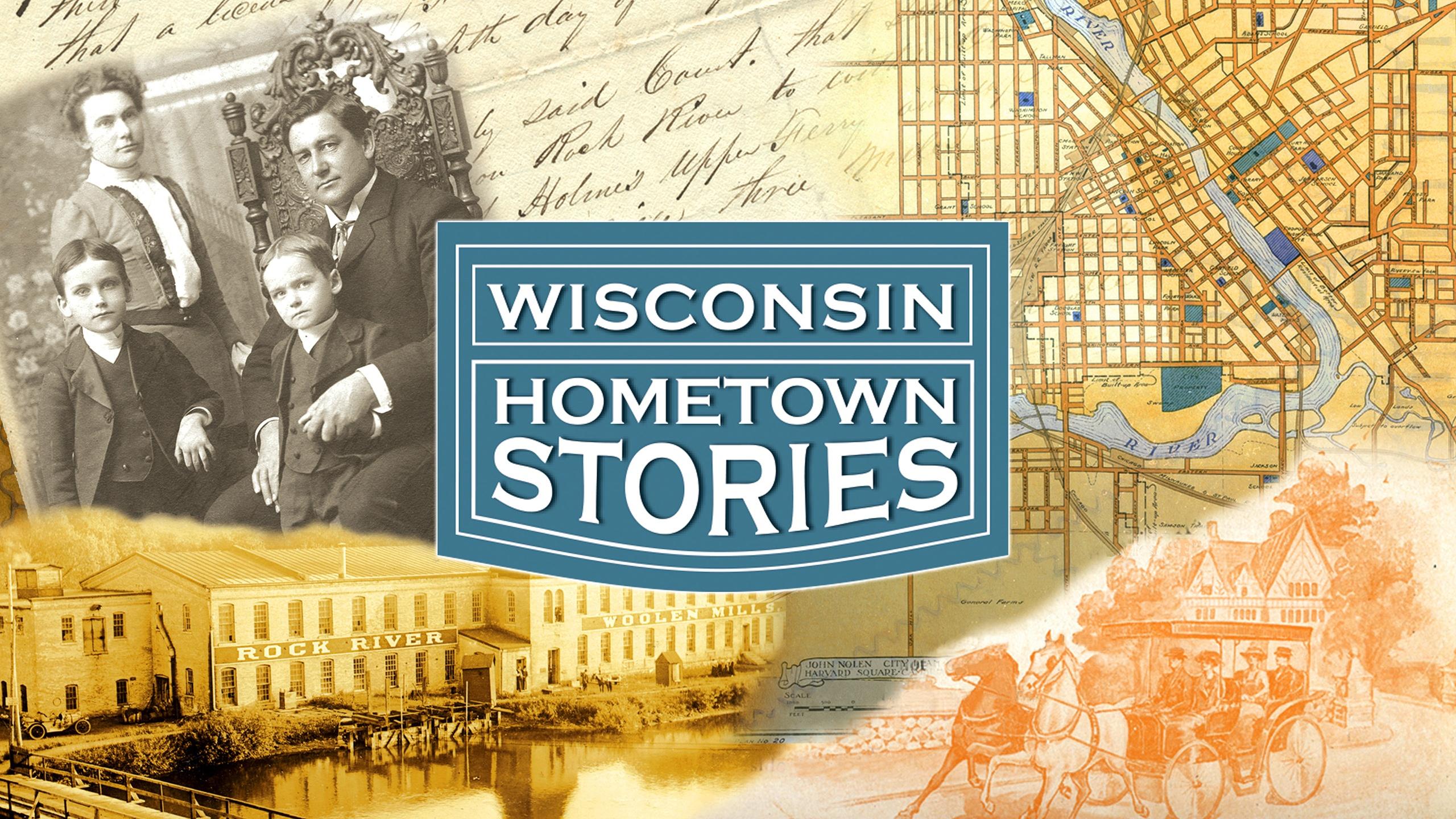




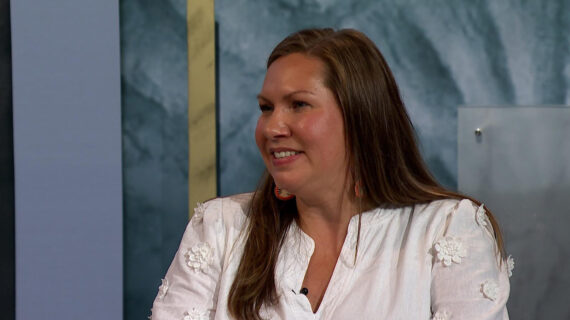

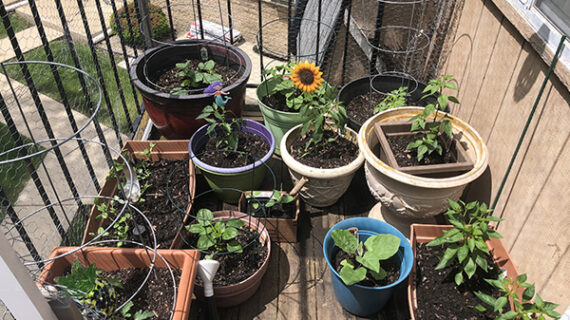
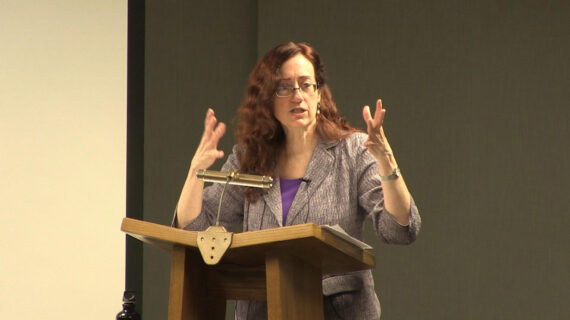
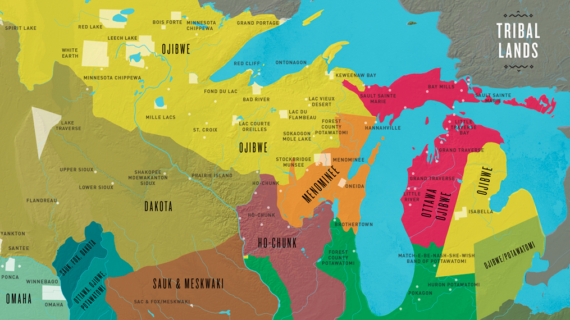
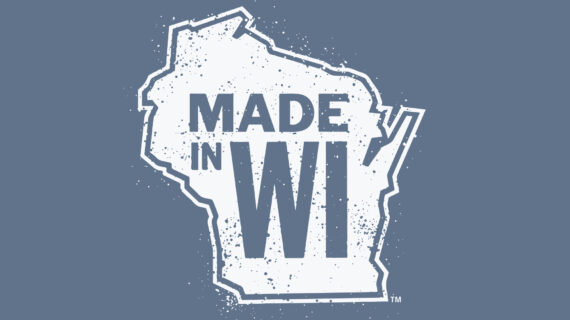
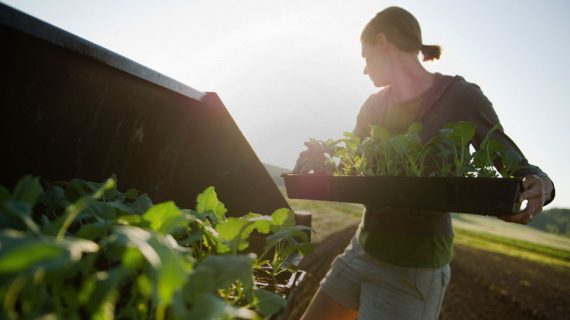
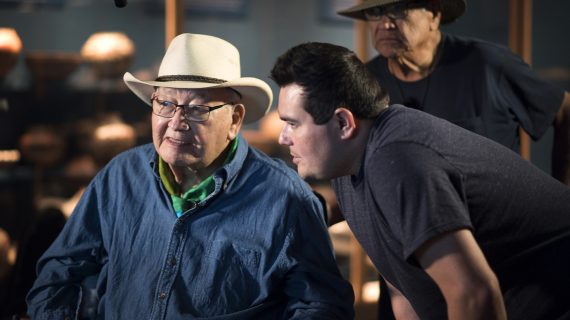



Follow Us